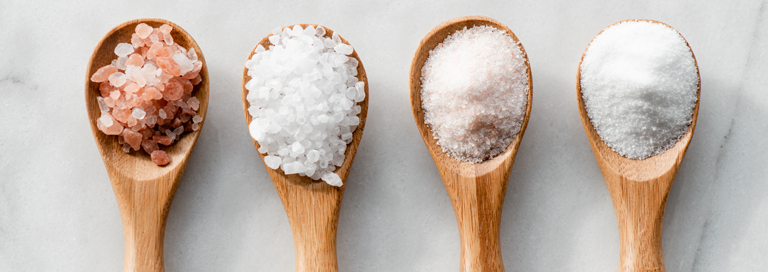Your doctor, the media, and the medical establishment continue to warn that flavoring your food with salt will kill you. They link sodium consumption to a higher risk of high blood pressure, stroke – and of course, heart disease.
As usual, the powers that be are missing the real picture…
You see, salt has been part of human life for thousands of years – long before these chronic diseases became as common as they are today.
Humans started adding salt to their food for more than 5,000 years. It was the most effective way to preserve food.
Some historians even go as far as to credit salt for the development of human civilization as we know it. With this incredible resource, communities were suddenly able to store food away for future use – making long, hard winters much easier to endure.1
Yet heart disease didn’t become the number one killer in the U.S. until the past century – alongside bad diet advice and the advent of mass-produced, processed foods.
That Isn’t Salt You’re Putting on Your Food…
Salt itself isn’t the culprit.
You see, the common table salt most people use today isn’t what you think it is. Traditional table salt is a highly processed product that’s devoid of nutrients and minerals – like most other processed foods.
Due to extensive processing, which either destroys nutrients with high temperatures or strips them out, it lacks the nutrients found naturally in unrefined salts. Then it’s bleached and supplemented with chemicals to stop it from clumping.
But that’s just the beginning of table salt’s modern mutation. Now, this fake Franken-salt is polluted with microplastics. Let me explain…
Roughly 8 million tons of plastic garbage are dumped into the ocean every year. Over time, this plastic waste breaks down into pellets that are
invisible to the naked eye. As these trace amounts of plastic float around the ocean, salt in the water crystallizes around them.When salt water is processed to create common table salt, these microplastics cannot be removed.
Today, 94% of salts used around the world contain these tiny pieces of plastic.2
Microplastics make up a larger portion of your diet than you think. In a recent review, researchers found that the average person consumes around 50,000 particles of plastic a year.3
The food industry will tell you that this level of consumption is negligible, but the actual science shows this just isn’t true.
Studies have shown that human exposure to microplastics could lead to:4
- Oxidative stress
- DNA damage
- Cancer
- Cognitive decline
- Chronic inflammation
- Hormone disruption leading to a wide array of diseases5
Fortunately, you don’t have to stop using salt. And you shouldn’t. All you need to do is turn to nature.
Try The Only Salt I Shake On The Right Kind Of Salt
Salt contains more than 60 minerals that you can’t live without, including calcium, potassium, magnesium, iron, and zinc. Real, unprocessed salt helps carry nutrients across your cell membranes… regulates blood pressure… promotes blood sugar health… supports strong bones… regulates sleep… improves vein health… keeps lungs clear… boosts libido… eliminates brain fog, and protects against Alzheimer’s.
Personally, I use salt almost every time I’m in the kitchen. Here’s what I suggest:
-
- Only use salt free of plastic pollutants. I used to recommend unrefined natural sea salt. But today, I only use pink Himalayan crystal salt. The name is a bit of a misnomer since it’s actually made from rock salt mined in Pakistan, but its history is fascinating. The rocks are found in an area that was covered in seabed hundreds of millions of years ago. When the region dried up, it left behind massive deposits of salt developing freely from today’s contaminated oceans. They also contain many trace minerals. For example, 500 mg of Himalayan salt has 250 mcg of iodine. Its pinkness comes from its rich iron content. It tastes different too.
- If you can’t find any Himalayan salt, shop for Celtic sea salt. Compared to other salts, the amount of microplastics is minuscule. Colored by the clay from where it’s harvested, Celtic sea salt is often called grey salt because it’s the color of clay from where it’s hand-raked in Brittany, France. The natural clay and sand create moist, mineral-rich crystals. Celtic sea salt retains its moistness. That means it can help restore electrolyte balance thanks to its alkalizing properties.
To Your Good Health,
![]()
Al Sears, MD, CNS
References:
1. Roberts W. “Facts and ideas from anywhere.” Proc (Bayl Univ Med Cent). 2001;14(3):314-322.
2. Lee H, et al. “Microplastic contamination of table salts from Taiwan, including a global review.” Sci Rep. 2019;9(1):10145.
3. Cox K, et al. “Human consumption of microplastics.” Environ Sci Technol. 2019;53(12):7068-7074
4. Danopoulos E, et al. “A rapid review and meta-regression analyses of the toxicological impacts of microplastic exposure in human cells.” J Hazard Mater. 2022 Apr 5;427:127861.
5. “Health Effects of Microplastics & Pathogens.” Plastic Health Coalition. www.plastichealthcoalition.org/microplastics/#:~:text=Based%20on%20these%20type%20of. Accessed on October 12, 2022.

